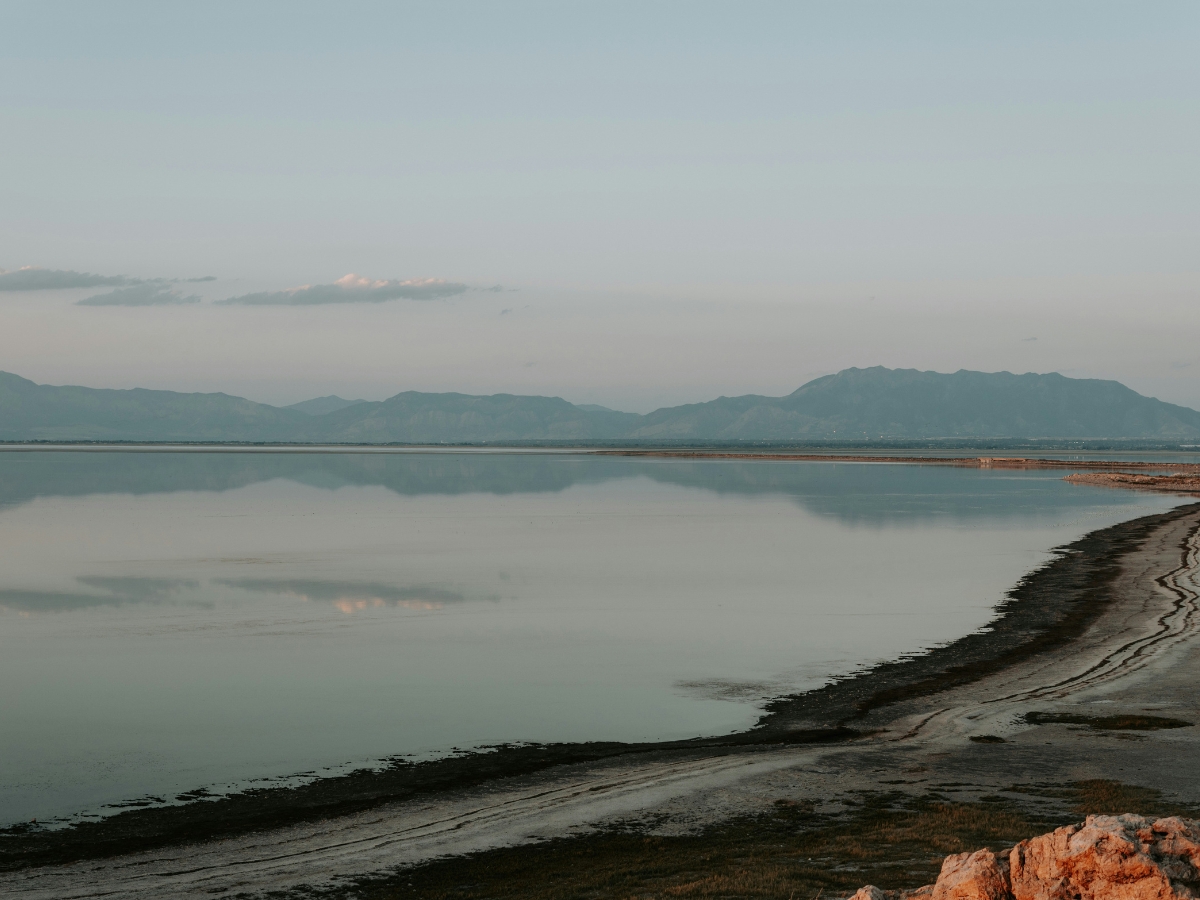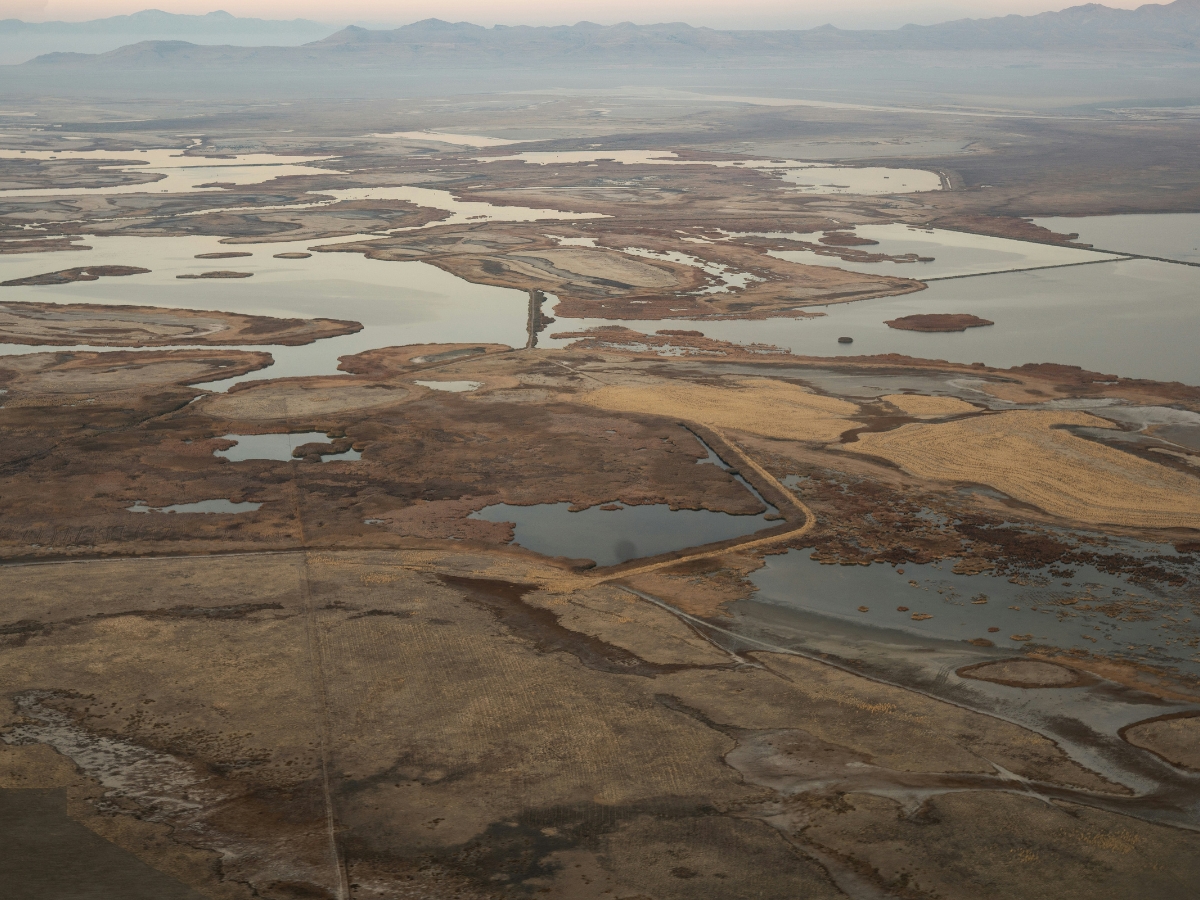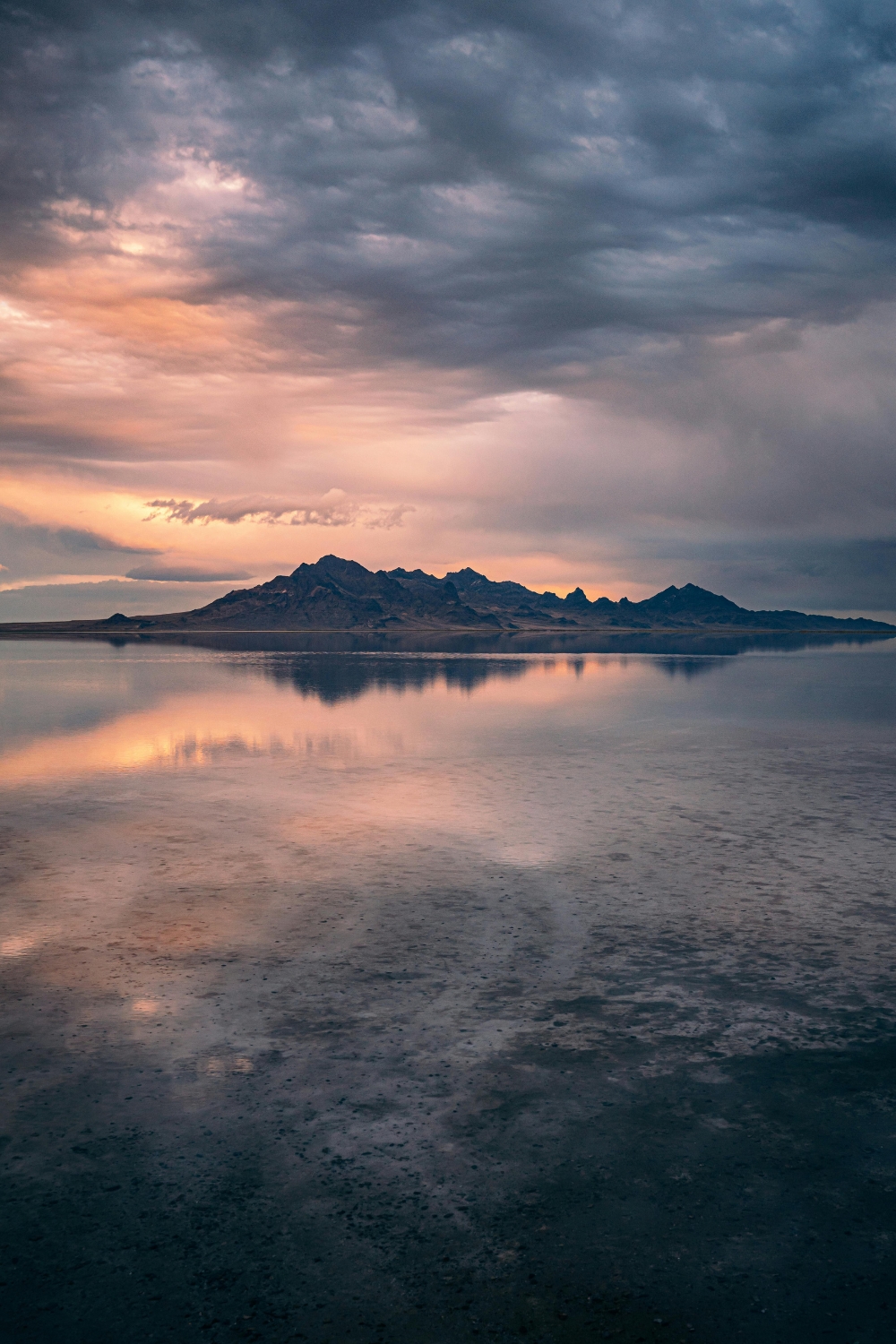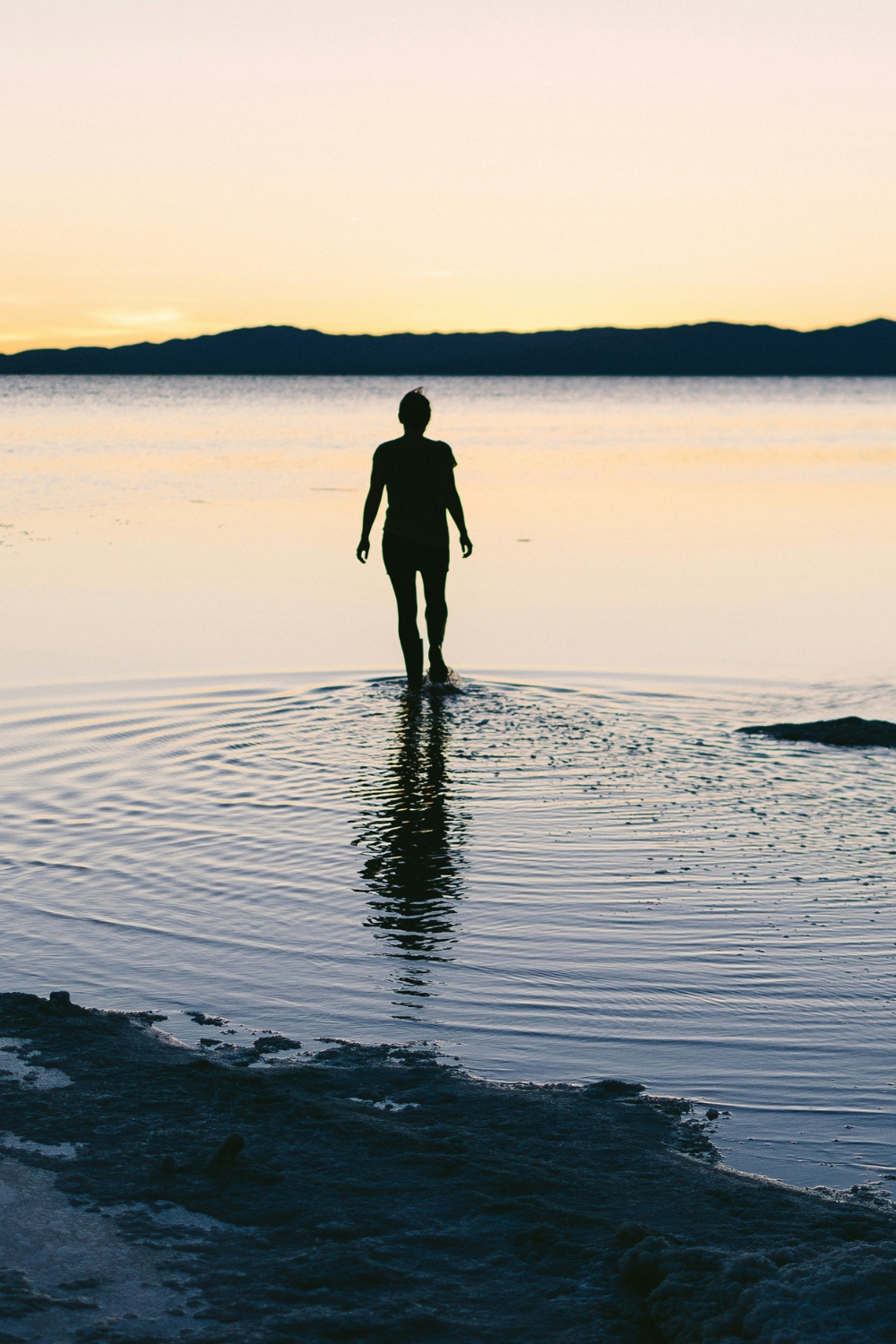The Great Salt Lake is the largest saltwater lake in the Western Hemisphere and the fourth-largest in the world. It covers over 1,700 square miles and sits about 4,200 feet above sea level. The lake is unique because it has no outlet, meaning water that enters it doesn’t flow out. As a result, the water is highly salty, much saltier than the ocean. The Great Salt Lake is a remnant of the ancient Lake Bonneville, which once covered much of Utah.

Great Salt Lake History
The Great Salt Lake in northwestern Utah is the largest saltwater lake in the Western Hemisphere and a remnant of the ancient Lake Bonneville. Around 30,000 years ago, Lake Bonneville spanned nearly 20,000 square miles, reaching parts of Nevada and Idaho. Over time, changes in climate caused the lake to shrink, leaving behind the Great Salt Lake, Bear Lake, and Utah Lake.
The lake entered recorded history in 1776 when Spanish missionaries Dominguez and Escalante learned about it through Native Americans. In 1824, trappers Jim Bridger and Étienne Provost explored it. The first scientific expedition took place in 1843, led by John C. Frémont, whose findings later influenced Brigham Young and other pioneers to settle in the Salt Lake Valley in July 1847. Three days after arriving, Young visited the lake, which became an essential resource for settlers.

In the 1850s, the lake was extensively surveyed under Howard Stansbury, whose report gained wide recognition. During the 20th century, various efforts were made to manage its water levels, including building a causeway in the 1950s and the West Desert Pumping Project in the 1980s. These initiatives aimed to address challenges caused by changing water levels and their effects on nearby communities and infrastructure.
Best Time to Visit
The best time to visit the Great Salt Lake depends on your interests and preferred weather. Early winter is a great choice for comfortable temperatures and fewer insects. The lake’s high salt levels keep it from freezing, and the area is less crowded. This season is also excellent for birdwatching, with migratory birds and winter residents like bald eagles and ducks in the area.
Spring and fall are ideal for birdwatching enthusiasts. Between March and May or July and October, millions of migrating waterfowl can be seen, offering stunning views.
For activities like kayaking or paddle boarding, summer and fall provide the best conditions. The water is warm enough for floating, and wildlife is active near Antelope Island State Park. Be ready for warmer weather and brine flies during these months. To avoid the bugs, plan a visit in early winter or late fall.
How to reach Great Salt Lake

Getting to the Great Salt Lake is easy due to its close distance to Salt Lake City and well-maintained roads. Here’s how to reach it:
1. By Car
The easiest way to reach the Great Salt Lake is by car. It is about a 30-minute drive from Salt Lake City. There are two main access points:
- Antelope Island State Park: Located on the lake’s east side, Antelope Island can be reached via the 7-mile Antelope Island Causeway, which connects the island to the mainland. The park offers hiking, biking, and wildlife viewing. To get there, take Interstate 15 north from Salt Lake City, exit at 332nd North (Antelope Drive) in Layton, and follow Antelope Drive west to the causeway entrance.
- Great Salt Lake State Park: Located on the lake’s south shore, this park has a marina, visitor center, and picnic areas. To reach the park, take Interstate 80 west from Salt Lake City, exit at 104th South (Saltair Drive), turn left onto the frontage road, and follow the signs to the park.
2. By Public Transportation
Public transportation to the Great Salt Lake is limited, but it is still possible to reach without a car:
- Bus Services: Utah Transit Authority (UTA) offers bus routes that can take you to areas close to the lake. However, these buses may not go directly to the lake’s shore or state parks. It is best to check UTA’s current schedules and routes for accurate details.
- Train and Taxi Option: Another choice is to take a train from Salt Lake City to a nearby station, then use a taxi to reach the lake. This trip typically takes about 1 hour and costs between $50 and $65, depending on the taxi fare.
3. By Air
If you’re traveling to Utah, the closest major airport is Salt Lake City International Airport (SLC), located just 4 miles west of downtown Salt Lake City. The airport offers many domestic and international flights. You can rent a car or use public transportation to reach the Great Salt Lake.
What to Do at the Great Salt Lake


1. Visit Antelope Island State Park
Antelope Island, the largest island in the Great Salt Lake, offers activities like hiking, biking, and camping. Popular trails include Frary Peak for stunning views and Buffalo Point for a relaxed experience. The island is home to bison, mule deer, pronghorn antelope, and many bird species, making it a great spot for wildlife viewing and birdwatching. Several campgrounds offer beautiful lakefront views.
2. Take a Boat Ride on the Great Salt Lake
A boat ride is one of the best ways to experience the Great Salt Lake. Options include guided tours, kayaking, and paddleboarding. Guided tours offer scenic views and interesting facts about the lake, while kayaking and paddleboarding provide a unique, hands-on adventure. Rentals are available at various locations, including Great Salt Lake State Park.
3. Float in the Lake
Antelope Island, the largest island in the Great Salt Lake, offers activities like hiking, biking, and camping. Popular trails include Frary Peak for stunning views and Buffalo Point for a relaxed experience. The island is home to bison, mule deer, pronghorn antelope, and many bird species, making it a great spot for wildlife viewing and birdwatching. Several campgrounds offer beautiful lakefront views.
4. Explore the Great Salt Lake Audubon Society Areas
The Great Salt Lake is an important stop for migratory birds. Birdwatching is a major activity, with species like pelicans and shorebirds seen throughout the year. The Great Salt Lake Audubon Society’s marshes and wetlands are popular birdwatching locations.
5. Hike the Great Salt Lake Trails
The lake area offers several hiking trails. Frary Peak Trail is a challenging hike with panoramic views, while the White Rock Bay Trail is a moderate 2.5-mile loop offering beautiful views of the lake.
6. Visit the Great Salt Lake State Park
Great Salt Lake State Park, located on the southern shore, is perfect for picnicking, boating, and fishing. The park has picnic areas with scenic views and a marina for boating. Fishing is popular, with species like the native cutthroat trout available to catch.
